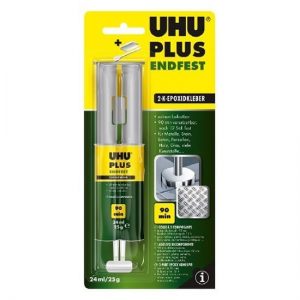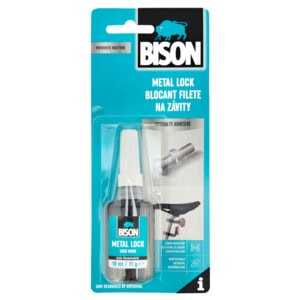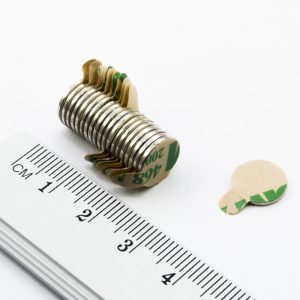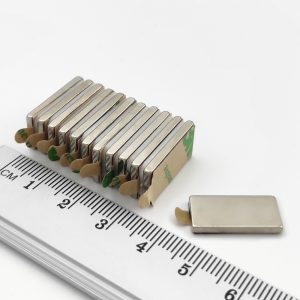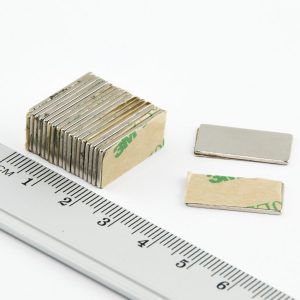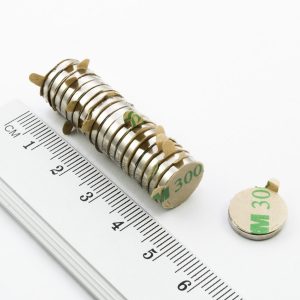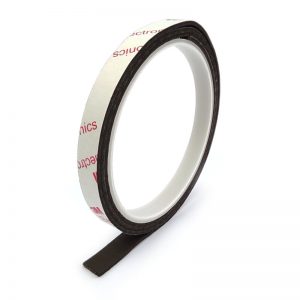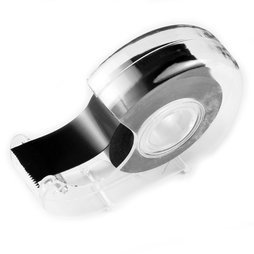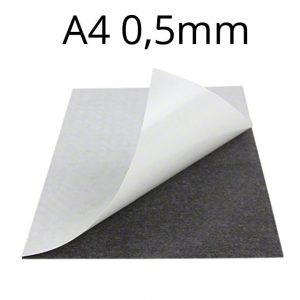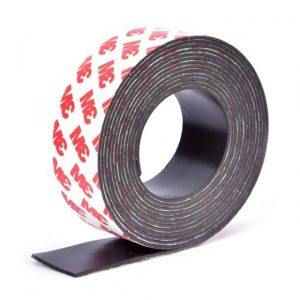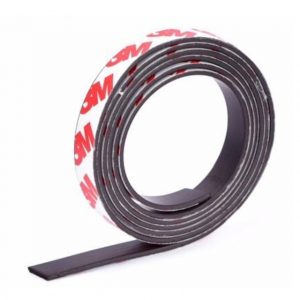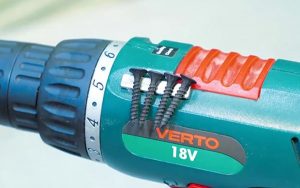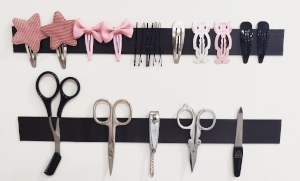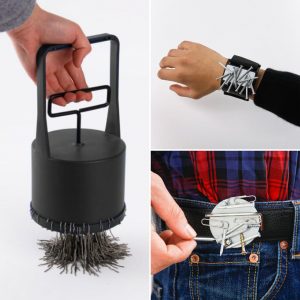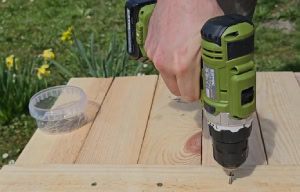Neodymium magnets and a glue gun?
A glue gun can be used for gluing neodymium magnets, but it is not the best way, because the high temperature can cause the magnet to lose its strength.
How does a glue gun work?

The glue gun heats up to over 100 °C. The glue in the form of a solid stick dissolves at such a high temperature after being inserted into the gun. Subsequently, we regulate the flow of the liquid, but very hot, glue just by squeezing.
Be very careful when handling hot glue. Contact with the skin can cause burns!
Neodymium magnets and hot glue
Most glues used in glue guns hold well to neodymium magnets. The disadvantage is that neodymium magnets lose some of their strength at high temperatures. Glue from a hot glue gun usually melts at temperatures around 120 °C. Most neodymium magnets begin to irreversibly lose their strength when heated above 80 °C. However, this does not mean that you cannot use a glue gun to glue magnets, because:
- Magnets lose only part of their strength when heated to 120 °C. For a magnet to lose 100% of its strength, you would have to heat it up to 300 °C (this temperature is called the Curie temperature).
- Magnets that have a large thickness compared to the base have a higher temperature resistance. For example, a neodymium magnet, disc, 10×10 mm N38 begins to permanently lose strength at a temperature of 140 °C, even though the value of 80 °C is generally stated for neodymium magnets.
- There are special types of neodymium magnets that have increased temperature resistance. Some of them will not lose any strength when heated to 120 °C. In our e-shop you can find these magnets in the category magnets with high temperature resistance.
For more information on the effect of high temperature on the strength of magnets, see the article High and low temperatures.
So you can use a glue gun to glue neodymium magnets, but there is a risk that the magnet will lose some of its strength.
How to glue neodymium magnets?
You can choose from the following options:
- magnet glue
- self-adhesive magnets
- self-adhesive magnetic tapes/sheets
Magnet glue
For gluing magnets, we recommend UHU Max Repair, UHU Plus Endfest, or BISON METAL LOCK thread locking glue:
If you want to maximize the strength of the glue, we have some advice for you:
- Thoroughly clean the surface of the magnet and the glued surface of any grease. This step is the most important of all. One touch with a greasy finger is enough to substantially reduce the strength of the joint. You can remove grease with isopropyl alcohol or acetone and a piece of cloth. The surface should be dry before gluing.
- Roughen both surfaces. You can roughen the surface of the magnet with sandpaper or make grooves in it with a nail.
- Fix the magnets. While the glue dries, the magnet should be pushed towards the glued surface. You can achieve this:
- By placing the magnet on top of the glued object. The magnet will be attracted by gravity.
- By fixing with a clamp, pin, vise or adhesive tape.
- By placing another magnet or magnetic metal on the opposite side. Make sure the magnet is not being pulled away from the joint by other magnets or metal objects.
- Follow the glue manufacturer’s instructions. In the case of glues, there are usually no instructions for gluing magnets. However, the surface of most of our magnets is made of nickel, so you can follow the instructions for bonding metals.
Self-adhesive magnets
You can also use self-adhesive magnets, such as these:
Or see our entire offer of self-adhesive magnets.
Self-adhesive magnetic sheets and tapes
Magnetic tapes and sheets are made of flexible material that can be easily cut with scissors. Films and tapes are available in different thicknesses. The thicker they are, the greater the magnetic force per cm2. Self-adhesive magnetic tapes/sheets can be used instead of a magnet with glue.
Magnetic tapes/sheets attract each other and are also attracted to iron and other metals. You can find the entire range of self-adhesive tapes and sheets in the categories magnetic and metal tapes and magnetic and ferrous sheets.
Other types of magnets
Ferrite, SmCo and AlNiCo magnets can be glued with the UHU glues mentioned above, but you can also use a glue gun on them without any worries. These magnets only experience a permanent loss of strength at much higher temperatures.
